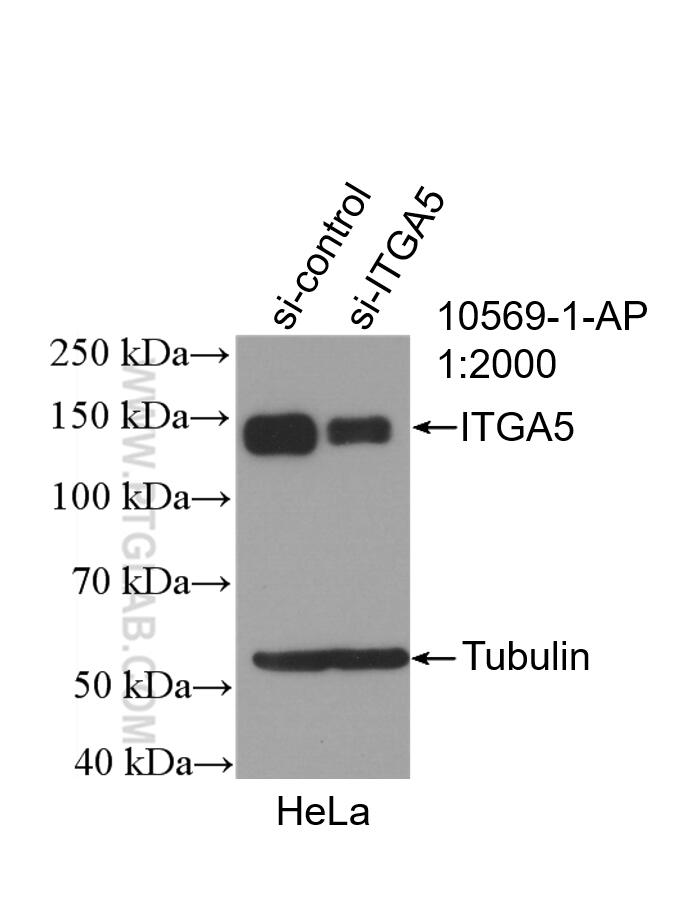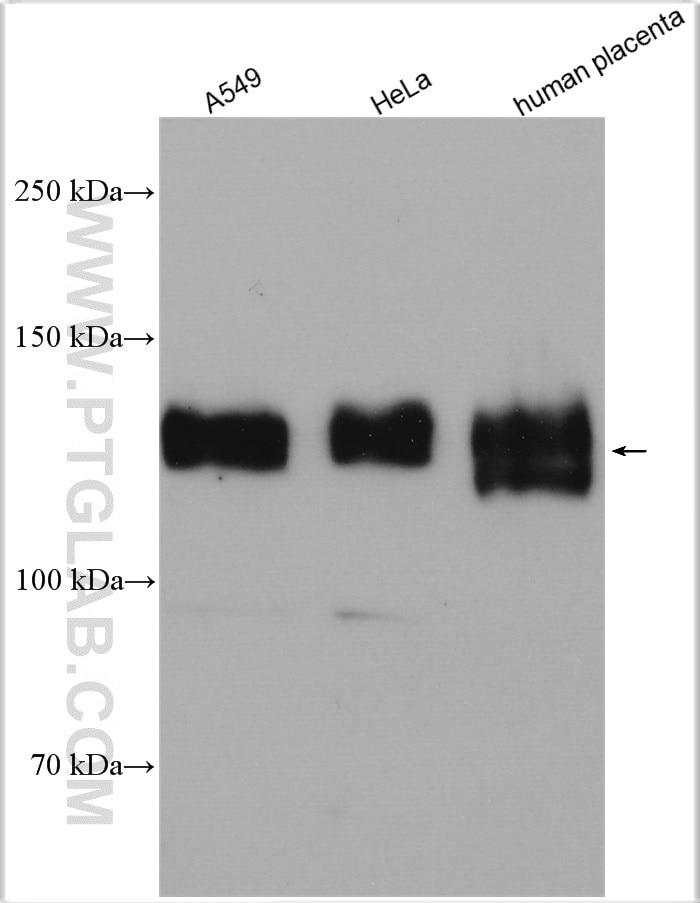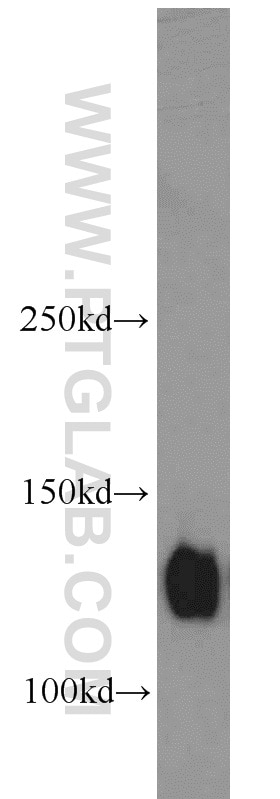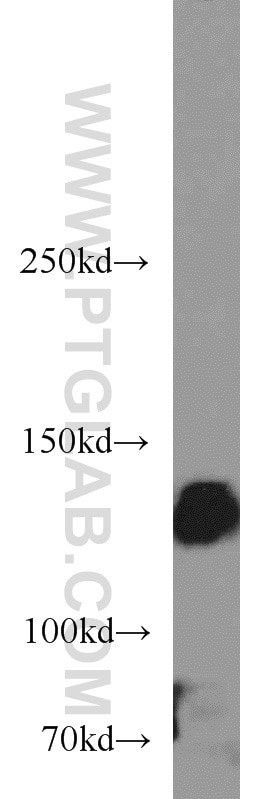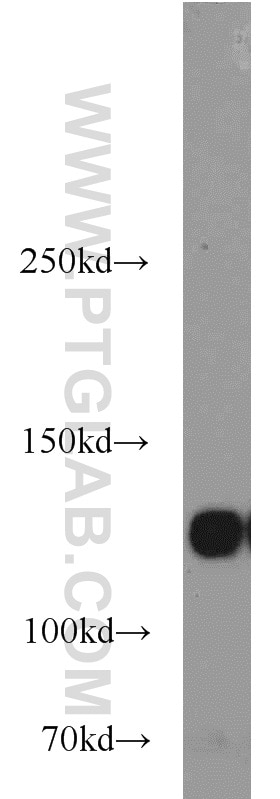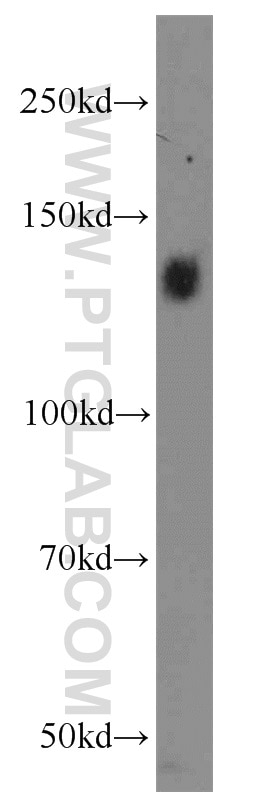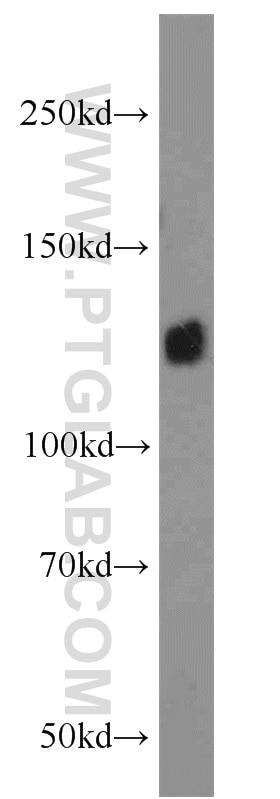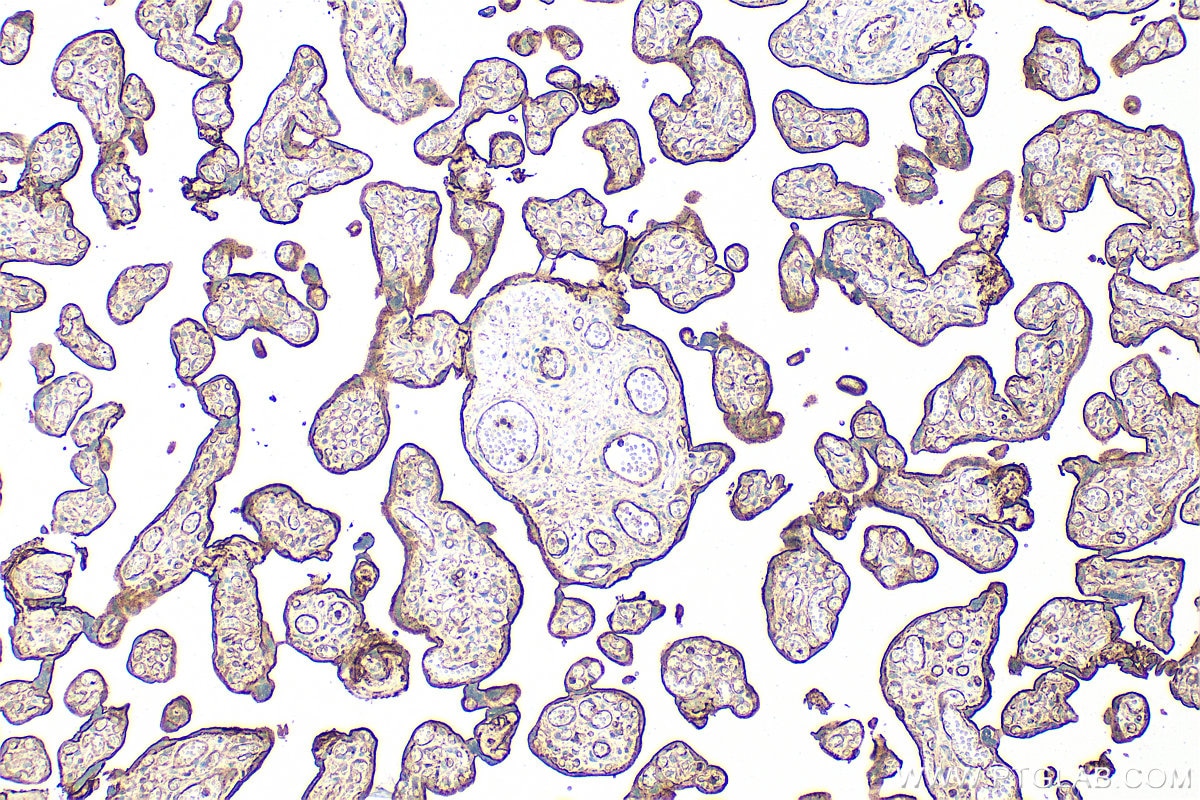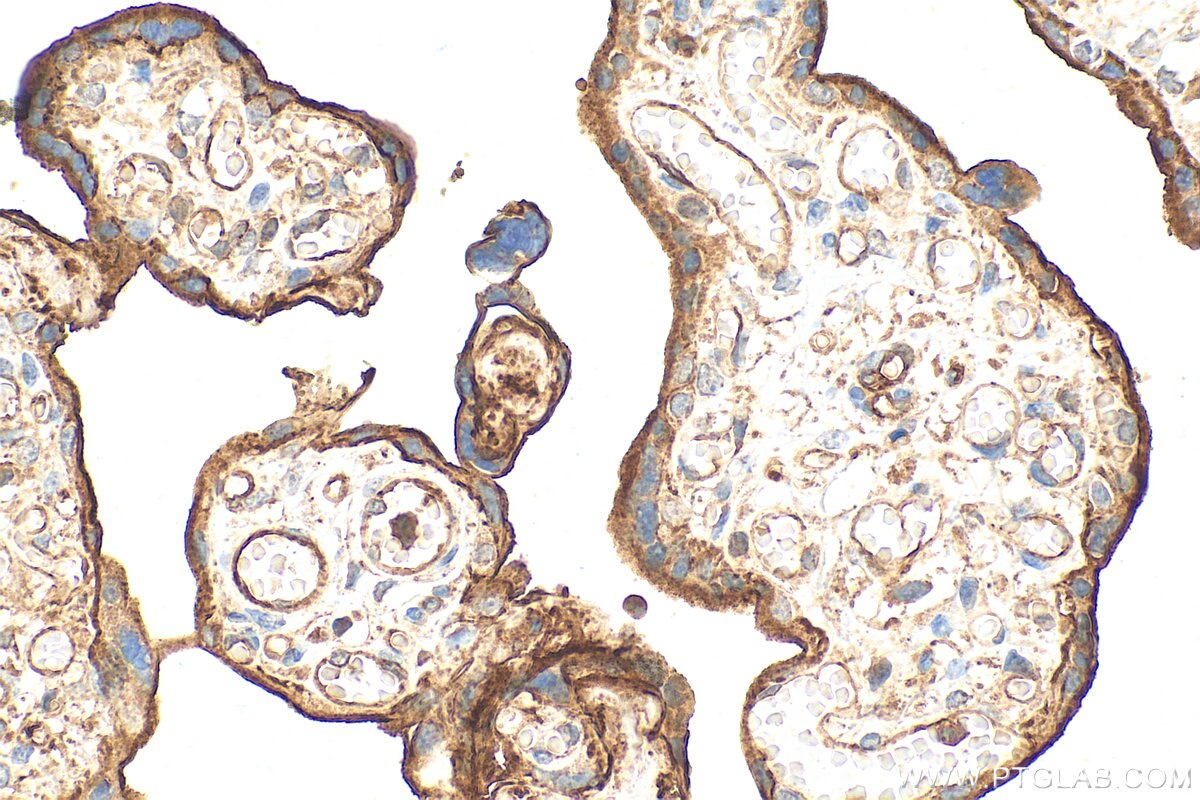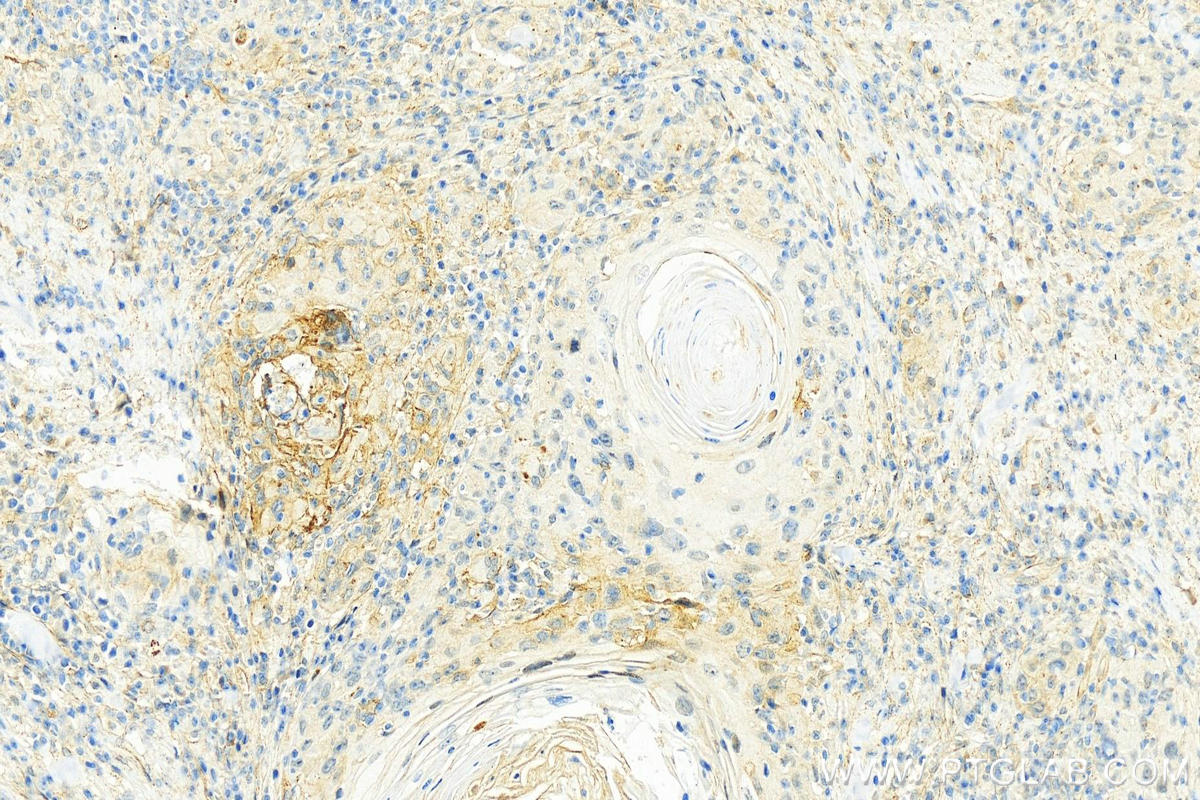Validation Data Gallery
Tested Applications
| Positive WB detected in | A549 cells, 3T3-L1 cells, COS-7 cells, HeLa cells, human placenta tissue |
| Positive IHC detected in | human placenta tissue, human skin cancer tissue Note: suggested antigen retrieval with TE buffer pH 9.0; (*) Alternatively, antigen retrieval may be performed with citrate buffer pH 6.0 |
Recommended dilution
| Application | Dilution |
|---|---|
| Western Blot (WB) | WB : 1:1000-1:6000 |
| Immunohistochemistry (IHC) | IHC : 1:300-1:1200 |
| It is recommended that this reagent should be titrated in each testing system to obtain optimal results. | |
| Sample-dependent, Check data in validation data gallery. | |
Published Applications
| KD/KO | See 3 publications below |
| WB | See 29 publications below |
| IHC | See 2 publications below |
| IF | See 8 publications below |
Product Information
10569-1-AP targets Integrin alpha-5/CD49e in WB, IHC, IF, ELISA applications and shows reactivity with human, mouse, monkey samples.
| Tested Reactivity | human, mouse, monkey |
| Cited Reactivity | human, mouse, rat |
| Host / Isotype | Rabbit / IgG |
| Class | Polyclonal |
| Type | Antibody |
| Immunogen | Integrin alpha-5/CD49e fusion protein Ag0860 相同性解析による交差性が予測される生物種 |
| Full Name | integrin, alpha 5 (fibronectin receptor, alpha polypeptide) |
| Calculated molecular weight | 115 kDa |
| Observed molecular weight | 135-150 kDa |
| GenBank accession number | BC008786 |
| Gene Symbol | Integrin alpha 5 |
| Gene ID (NCBI) | 3678 |
| RRID | AB_2130060 |
| Conjugate | Unconjugated |
| Form | Liquid |
| Purification Method | Antigen affinity purification |
| UNIPROT ID | P08648 |
| Storage Buffer | PBS with 0.02% sodium azide and 50% glycerol{{ptg:BufferTemp}}7.3 |
| Storage Conditions | Store at -20°C. Stable for one year after shipment. Aliquoting is unnecessary for -20oC storage. |
Background Information
Integrins are cell adhesion receptors that are heterodimers composed of non-covalently associated alpha and beta subunits. Integrin alpha 5 (ITGA5), belongs to the integrin alpha chain family, primarily binds to Integrin beta 1 (ITGB1) to form an α5β1 heterodimer (PMID: 33711961). Integrin α5β1 is a specific receptor of fibronectin through its arginine-glycine-aspartic acid (RGD) binding site (PMID: 19608542). Integrin α5β1 plays roles in cell adhesion, migration and matrix formation, and has emerged as an essential mediator in many human carcinomas (PMID: 33408483).
Protocols
| Product Specific Protocols | |
|---|---|
| WB protocol for Integrin alpha-5/CD49e antibody 10569-1-AP | Download protocol |
| IHC protocol for Integrin alpha-5/CD49e antibody 10569-1-AP | Download protocol |
| Standard Protocols | |
|---|---|
| Click here to view our Standard Protocols |
Publications
| Species | Application | Title |
|---|---|---|
Biomaterials Osteogenesis potential of different titania nanotubes in oxidative stress microenvironment. | ||
Int J Mol Sci Atp6v1h Deficiency Blocks Bone Loss in Simulated Microgravity Mice through the Fos-Jun-Src-Integrin Pathway | ||
Front Cell Dev Biol Mesenchymal Stem Cells With Cancer-Associated Fibroblast-Like Phenotype Stimulate SDF-1/CXCR4 Axis to Enhance the Growth and Invasion of B-Cell Acute Lymphoblastic Leukemia Cells Through Cell-to-Cell Communication. | ||
Oncotarget Annexin A4 fucosylation enhances its interaction with the NF-kB p50 and promotes tumor progression of ovarian clear cell carcinoma. | ||
Sci Rep Evidence of novel miR-34a-based therapeutic approaches for multiple myeloma treatment. | ||
Front Oncol ITGA5 Is a Novel Oncogenic Biomarker and Correlates With Tumor Immune Microenvironment in Gliomas. |
